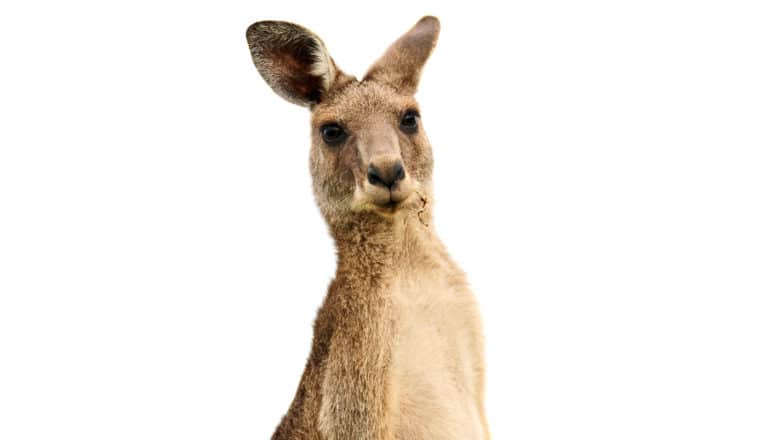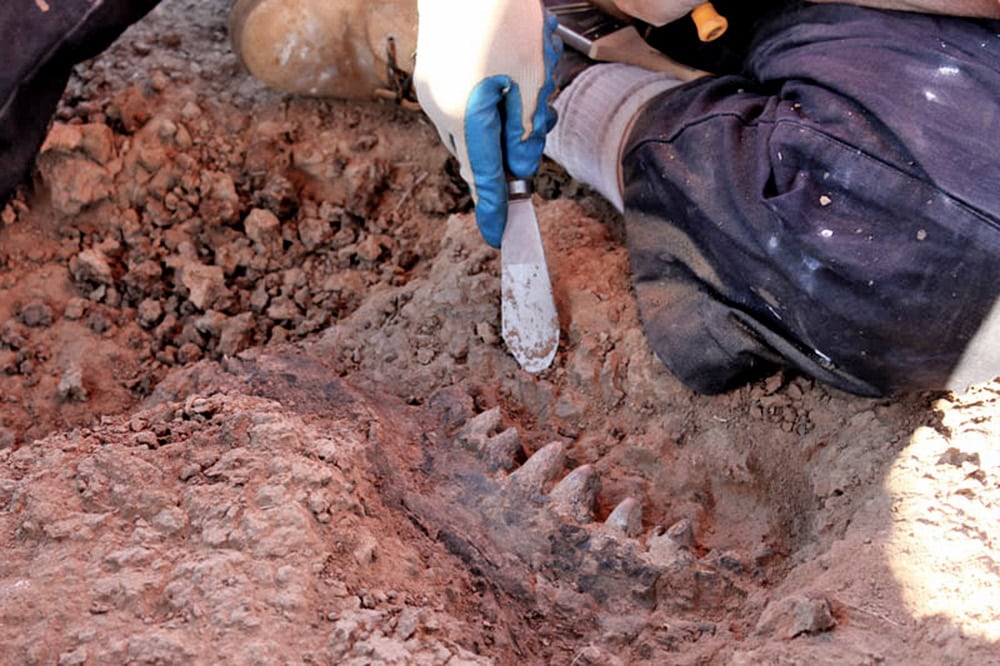
Paleontologists report the discovery of new extinct Australian megafauna that lived until 40,000 years ago in tropical northern Australia.
Some of the highlights from the site include the discovery of the remains of the world’s largest kangaroo at 2.5 meters (8 feet) tall and an estimated mass of 274kg (600 pounds), this makes it the largest kangaroo of all time, says Scott Hocknull, paleontologist with the Queensland Museum and honorary faculty member at the University of Melbourne.
“While the rest of the world had giant carnivores like saber-toothed cats, bears, and hyenas, Australia’s predators were mostly giant reptiles, including an extinct freshwater croc around seven meters long, a relation to the modern salt water crocodile, and a land-dwelling crocodile,” he says.
“There were also two giant lizards including a six-meter-long lizard called Megalania and another giant lizard, similar in size to the Komodo dragon.” (Six meters is nearly 20 feet.)

The research, published in Nature, comes from an area near Mackay called South Walker Creek, the youngest megafauna site in northern Australia and former home to at least 16 species of megafauna.
Extreme environmental change was the most likely cause of extinction, not humans, find the researchers.
“The megafauna at South Walker Creek were uniquely tropical, dominated by huge reptilian carnivores and mega-herbivores that went extinct around 40,000 years ago, well after humans arrived onto mainland Australia,” says Hocknull.
“We cannot place humans at this 40,000-year-old crime scene, we have no firm evidence. Therefore, we find no role for humans in the extinction of these species of megafauna.
“Instead, we do find that their extinction is coincident with major climatic and environmental deterioration both locally and regionally, including increased fire, reduction in grasslands, and loss of freshwater. Together, these sustained changes were simply too much for the largest of Australia’s animals to cope with.”
The South Walker Creek site was the stomping ground for a diverse range of megafauna including several new species, which scientists are yet to formally describe.
In 2008, the Barada Barna people discovered the Australian megafauna fossils during a cultural heritage clearance at the South Walker Creek site, which BHP Billiton Mitsui Coal operates. The site is located 40 kilometers (25 miles) west of Nebo and, through a partnership with Queensland Museum Network, there has been a systematic excavation since 2008 that has revealed spectacular megafauna fossils ranging from minute fish scales to colossal limb bones.
“The Board of Directors from the Barada Barna Aboriginal Corporation are extremely excited that we have found the megafauna within our traditional country,” says a Barada Barna Aboriginal Corporation spokesperson.
“The Barada Barna people have an immensely proud history dating back to our first encounters with Ludwig Leichhardt in 1845 on the banks of Cherwell Creek and having discovered megafauna only enriches our history within this region.
“The team that discovered these finds back in 2008 had no idea of how great a discovery it was, with the help of Queensland Museum we have discovered more and more animals from that time.”
Collaborators on the study are from the University of Adelaide, Griffith University, Southern Cross University, the University of Queensland, Australian National University, and the University of Wollongong.
Source: University of Melbourne
The post Fossils reveal Australia’s 600-pound kangaroo, 20-foot lizard appeared first on Futurity.
from Futurity https://ift.tt/3ecCieD
No comments:
Post a Comment